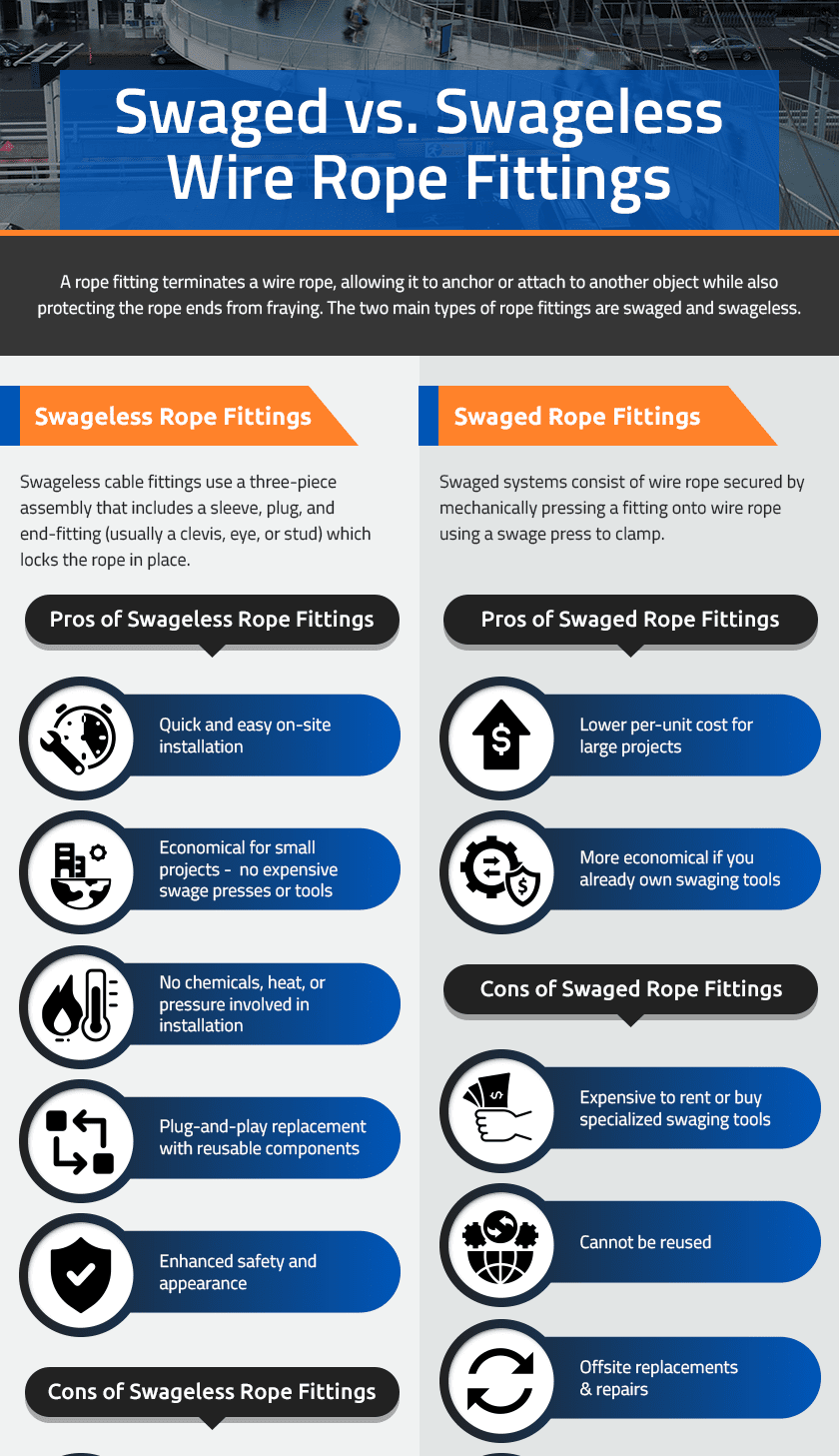How to Secure Wire Rope
Leave a CommentWire rope is composed of a metal or fiber core, metal wires, and the individual twisted strands of metal that form those wires. It is used to handle heavy loads in applications that involve lowering, hoisting, and moving objects horizontally. The ends of wire rope must be safely secured with a termination that prevents fraying, maintains tension, and facilitates connection to a load or tool. Wire rope ends terminated using traditional wire rope clamps and clips leave unsecured and unenclosed ends, posing a safety danger.
Due to workplace injuries and fatalities caused by wire rope failure, there has been a growing movement for more safe and reliable wire rope end terminations. Electroline offers innovative wire rope end fittings that provide more security than other termination styles and are easy to install. Instead of a clip, which is never recommended for overhead lifting applications, our wire rope assembly products feature a three-piece system that includes a sleeve, plug, and end fitting to secure and enclose the ends of your wire rope. This blog post will further discuss why securely enclosing wire rope is critical and how to secure wire rope correctly.
Why Should Wire Rope Be Enclosed and Secured?
There are several ways to secure the end of a wire rope. Traditionally, the end of the rope is folded back to create a loop, and clips are used to secure this loop in place. However, traditional clips do not enclose the ends of a rope and instead leave it fully exposed. This poses a significant safety risk.
When traditional clips are used, the sharp endings of wire rope are left loose and dangerous. They can easily snag on clothing or objects and injure workers. Ropes with high rotation characteristics must only be used when both ends are fixed and secured for safe use. To solve these safety issues, Electroline’s Safe-Line Clamps feature a fully enclosed design that prevents cuts and snagging.
Dangers of Unsecured Wire Rope Dead Ends
Traditionally secured wire rope features a dead end that is left dangling. This sharp, exposed metal end poses several dangers for personnel and equipment. The numerous, sharp metal strands of wire rope pose a safety hazard to unprotected hands. The unenclosed ends easily cause lacerations, especially when the rope is released.
There have been many workplace injuries and even fatalities that have occurred as a result of improper wire rope handling. The loose, exposed ends of a wire rope become distorted over time, gradually becoming more tightly coiled. When they suddenly spring and unravel, the people and equipment nearby are at serious risk of injury. Nearby items are easily snagged when the rope is rapidly released or swung. Electroline clamps eliminate these dangers by safely encapsulating wire rope ends.
Securing Wire Rope with Electroline Clamps
Electroline’s Safe-Line Clamps are a safer alternative to traditional wire rope clips and clamps. Our products secure wire rope behind the termination to prevent sagging and loose wires. Safe-Line Clamps are an excellent choice for field installations that need fast, easily installed rope terminations. The finished assembly resembles a swage fitting with a neat, clean profile but with added reliability. There are no sharp edges or loose ends and the hold is strong. The Safe-Line Clamp is rated with an efficiency of over 90% of the rated wire rope strength. Other advantages include:
- Easy assembly: Installation can be completed in minutes on-site without special equipment, chemicals, heat, or pressure.
- Enhanced strength and durability: Electroline clamps are zinc-coated to prevent corrosion and are produced in cast, forged, or machined materials allowing them to surpass the breaking strength of other ropes.
- Versatility: They come in a variety of finishes, platings, and designs with custom designs available.
Learn More About Electroline Clamps
Properly securing wire rope ends is critical for safety reasons. While traditional clips leave a dangerously exposed end, Electroline clamps offer unrivaled security. Not only do they provide a unique dampening zone that increases the lifespan of the rope, but they are stronger and more reliable than other termination options.
You can see for yourself how easy Electroline wire rope clamp installation is by reviewing the assembly instructions here. To learn more about our Safe-Line clamps, browse the selection on our website or reach out to our team with any questions.



